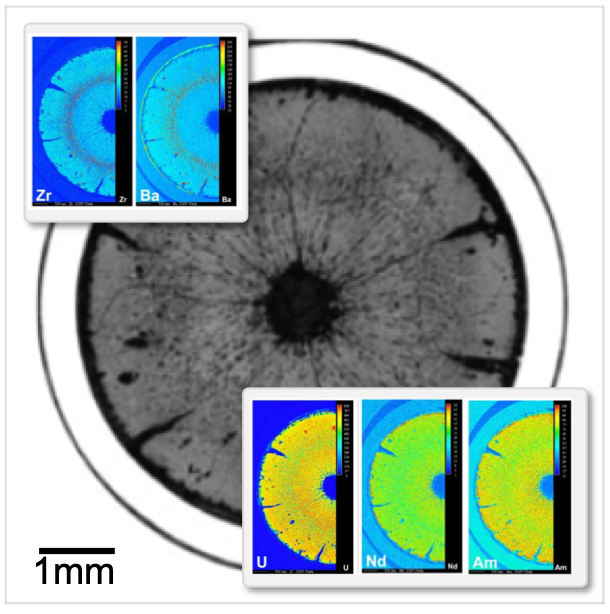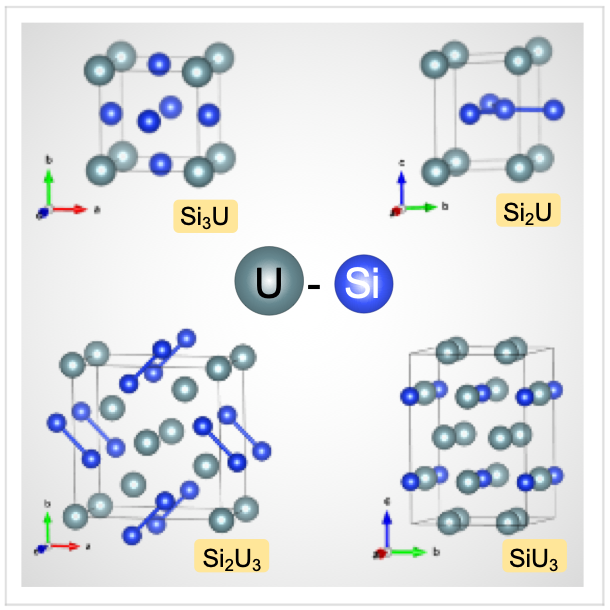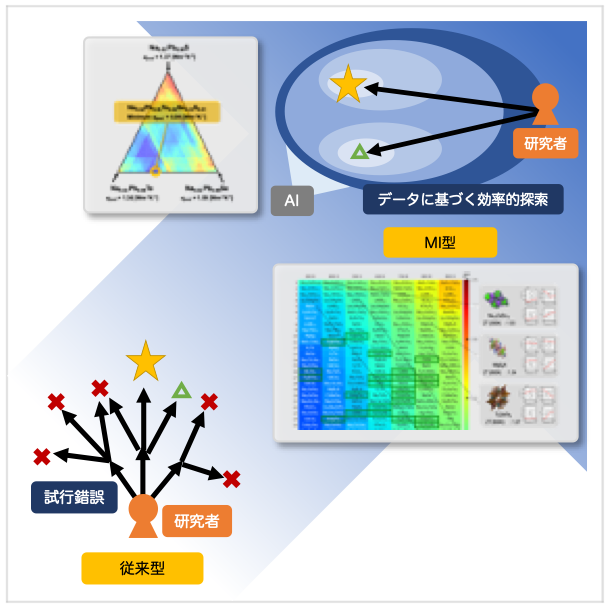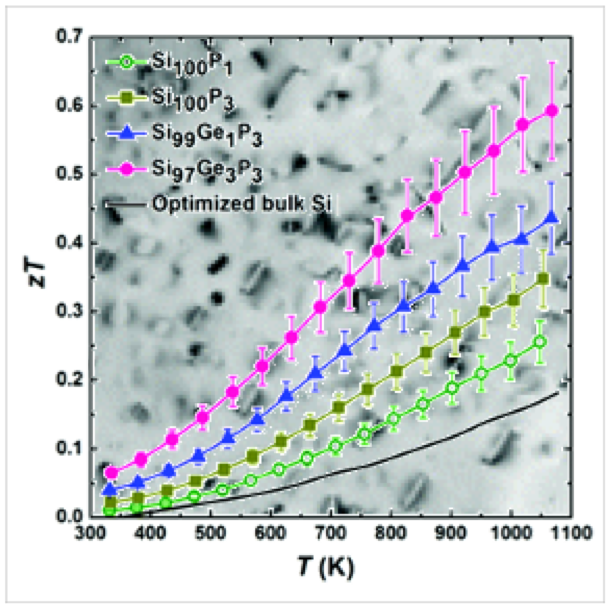RESEARCH
Physical and Chemical Properties of Nuclear Fuels/Materials
Effect of Fission Products Accumulation on Physical and
Chemical Properties of Nuclear Fuels
Fission of nuclear fuels generates enormous energy, but also fission products. As fission products accumulate in nuclear fuels, the physical (thermal conductivity, hardness, etc.) and chemical (oxygen potential, etc.) properties of nuclear fuels change gradually. A proper understanding of this change is essential for maintaining the safety and economic efficiency of nuclear reactors. In this study, we will prepare simulated fuels with various solid-state fission products added to uranium dioxide and evaluate their physical and chemical properties.
Rerated paper
K. Kurosaki et al., “High wettability of liquid caesium iodine with solid uranium dioxide”, Sci. Rep. 7, 11449-1-11449-6 (2017). DOI: 10.1038/s41598-017-11774-0

Development of new accident tolerant fuels (ATFs)
After the Fukushima Daiichi nuclear power plant accident, accident tolerant fuels having great resistance to accidents has attracted attention. Among a lot of candidates for the ATFs, we focus on “silicide-fuel” that is a compound composed of uranium and silicon. In this study, uranium silicides with various compositions are fabricated and their physical properties are evaluated.
Rerated paper
A. Mohamad et al., “Thermal and mechanical properties of U3Si and USi3”, Ann. Nucl. Energy 133, 186-193 (2019). DOI: 10.1016/j.anucene.2019.05.028

Development of New Materials using Materials Informatics
In conventional materials science, new materials are developed by accumulating experiments one by one. In recent years, materials informatics (MI) has been attracting attention as a new method to efficiently develop materials by machine learning based on large-scale materials data. This MI is expected to significantly shorten time and discover new materials that have not even been predicted so far. In this study, we will develop new nuclear fuel materials and thermoelectric materials by machine learning using large-scale material data.

Development of cost-effective and non-toxic
high-efficiency thermoelectric materials
Development of environmentally friendly,
low-cost, high-efficiency thermoelectric materials
Thermoelectric materials that convert heat directly into electricity can be applied to technologies that recover and efficient use waste heat that exists thinly and widely in various places, and energy harvesting technologies that generate electricity stably over a long period of time with a small temperature difference. In this study, we will develop new thermoelectric materials mainly composed of silicon.
Rerated paper
K. Kurosaki et al., “Enhanced Thermoelectric Properties of Silicon via Nanostructuring”, Mater. Trans. 57, 1018-1021 (2016). DOI: 10.2320/matertrans.MF201601
